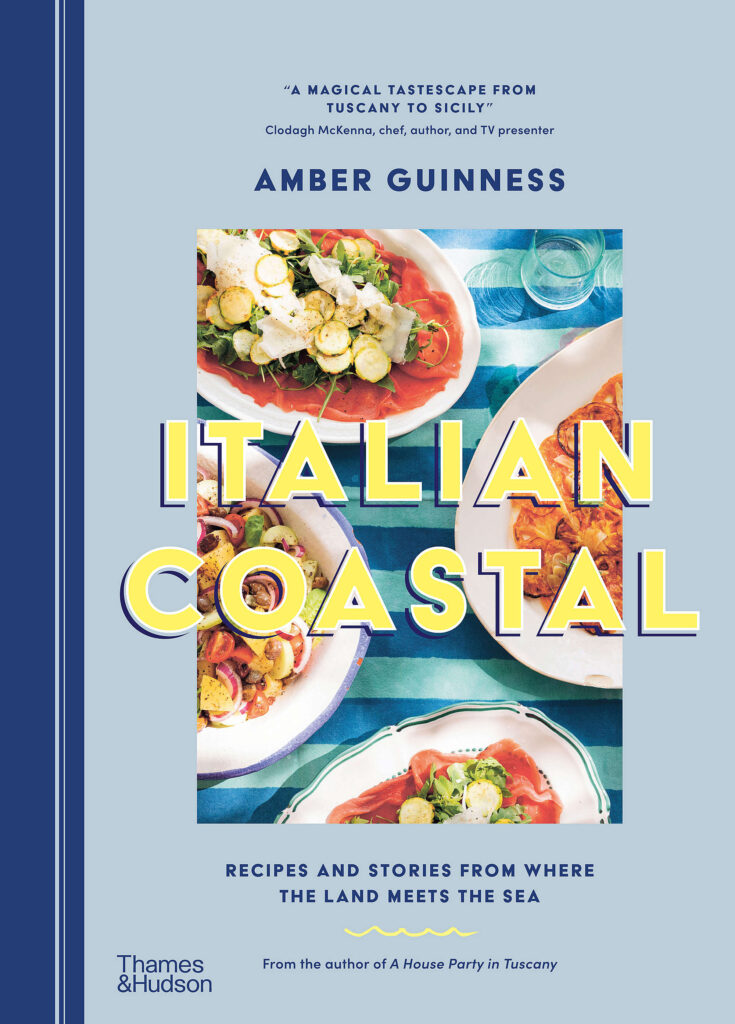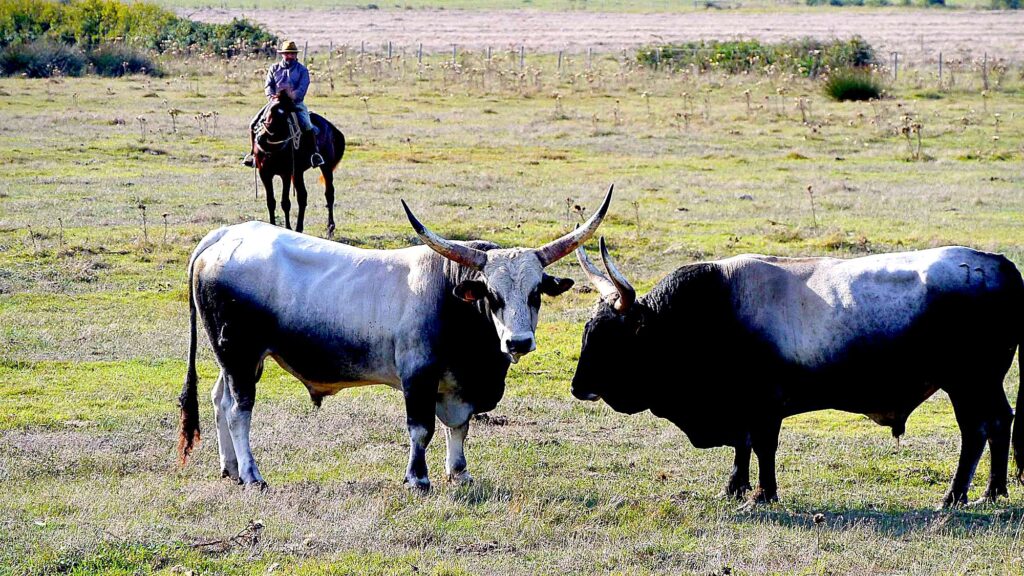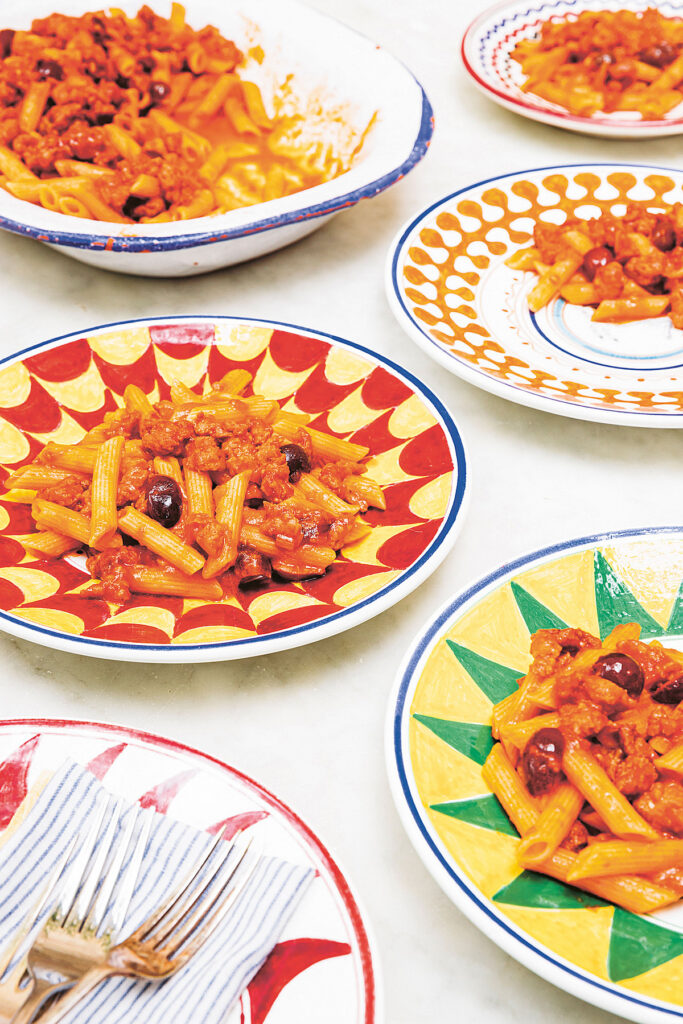
Every so often a cookbook comes our way that plucks the heartstrings of memory. Having eated most of the way down the Tyrrhenian coast from Tuscany to Sicily, recipe after recipe reminds us of some sunny day at a long table in the open air. The book’s subtitle says it well ‶Recipes and stories from where the land meets the sea.″
This isn’t author Amber Guinness’s first rodeo. Her initial book, A House Party in Tuscany, featured stories and recipes from the family’s Arniano Painting School, a residential program that features, among other attractions, Amber’s cooking. Born in London and educated in England, Guinness had the great fortune of growing up in Arniano in Tuscany. She has broadened her horizons, gleaning tastes and traditions from all along the western Italian coast.
The recipes in this book are aimed at the home cook. There’s no attempt to replicate polished restaurant cuisine. This is straightforward food you’d serve to your family and friends. Nor is it hyphenated culture cuisine. She’s perfectly happy to use canned tomatoes when necessary, but don’t expect long-simmered sauces or heavy dishes. It’s Italian the way that Italians cook the cuisine. We were also happy to see that Guinness doesn’t make the book all about seafood, though there are some great fish recipes.
This is a book we expect to turn to more and more often as we get into the summer vegetable season. But there are some dishes that work well the rest of the time. Her choice for the Maremma, for example, harks back to some peasant food like the cowboy ragu below.
Maremma: Tuscany wine and food at the coast

David visited the Maremma in 2019 (see this post) to write about this southwest corner of Tuscany as one of the emerging great wine regions of Italy. In the process, he visited the national park at the coast — where Tuscan cowboys still tend the buffalo that provide the milk for bufalo mozzarella. The cows were all at the milking barn when he shot this photo of a cowboy tendings to a couple of bulls.
It is a magical region, where limestone hills now terraced in grape vines step down to the Tyrrhenian Sea. That moisture, even miles away, diffuses the sunlight to give the entire landscape a magical glow.
For a taste of Italian Coastal, we’ve been permitted to reprint this Maremma recipe. One note for American readers: ‶tomato passata″ is not widely sold in the U.S. But crushed tomatoes are. To get the same texture, we usually push crushed tomatoes through a chinois or other fine metal sieve.
PENNE WITH COWBOY RAGU
Butteri are cowboys from the southern coastal region of Maremma in Tuscany. Apparently dating back to when the area was run by the Etruscans, butteri were responsible for wrangling the buffalo the region is famous for on horseback. They were central to the economy of Maremma, making the most of the region’s varied landscape — marsh, woodland, hills, and coast —throughout the year. With the demise of large estates in the 20th century the role became more folkloristic than a way to make a living.
Pasta alla buttera is a quick and practical dish that could be made on the move over a campfire. As with most peasant dishes it was traditionally made with whatever the butteri had on hand (meaning there are a hundred different versions), but generally it featured sausages made of wild boar, which run rampant through the Tuscan countryside. Here I use good-quality pork sausages, and I’ve allowed a little more cooking time to develop maximum flavor. Do be picky about your sausages as the best you can buy will give a superior texture.
PREPARATION: 15 minutes
COOKING: 40 minutes
SERVES 6

- 6 wild boar or organic pork sausages
- 3 tablespoons olive oil
½ white onion, finely chopped - sea salt
2 garlic cloves, crushed - 1 long red chili, cut in half lengthwise, deseeded and finely sliced crosswise into ribbons
- 130 g (4 ½ oz) good-quality black olives, pitted, and sliced in half lengthwise
- 400 ml (13 ½ fl oz) tomato passata
- 500 g (1 lb 2 oz) penne
- chili flakes, to taste
- 80 g (2 ¾ oz) pecorino toscano or romano, finely grated, plus extra to serve
Remove the sausage meat from its casings, put in a bowl and break into small bite-sized pieces.
Heat 1 tablespoon of olive oil in a wide frying pan or medium saucepan over a medium heat. Brown the sausage meat for 5 minutes, stirring occasionally to ensure it cooks evenly, then transfer to a bowl.
Heat the remaining olive oil in the pan, add the onion and a pinch of salt, and cook over a medium heat for 2 minutes. Add the garlic, sliced chili and half of the olives, and cook for another 5 minutes or until the onion is translucent. Stir in the sausage meat.
Pour the passata over the sausage mixture, then half-fill the empty bottle with water and swish it around to pick up any remaining tomato, and pour the tomatoey water into the pan. Add the rest of the olives and leave to bubble away over a medium heat for 25 minutes, stirring occasionally.
Meanwhile, bring a large saucepan of salted water to the boil. Add the penne, give it a good stir so that it doesn’t stick together, and cook until al dente (about 10 minutes, but check the package instructions). Halfway through the cooking time, scoop out a ladleful of the starchy pasta water and add it to the sauce. Increase the heat and stir so that the water amalgamates with the sauce. Taste and adjust the seasoning if necessary, and add chili flakes, to taste.
Drain the pasta and add to the sauce, along with the grated pecorino and a splash of pasta water if it still needs help coming together. Serve immediately, topped with more pecorino.
Excerpted from Italian Coastal, by Amber Guinness
© Thames & Hudson Australia 2024
Text © Amber Guinness
Reprinted by permission of Thames & Hudson Inc, www.thamesandhudsonusa.com
Recipe photo credit: © Saghar Setareh
